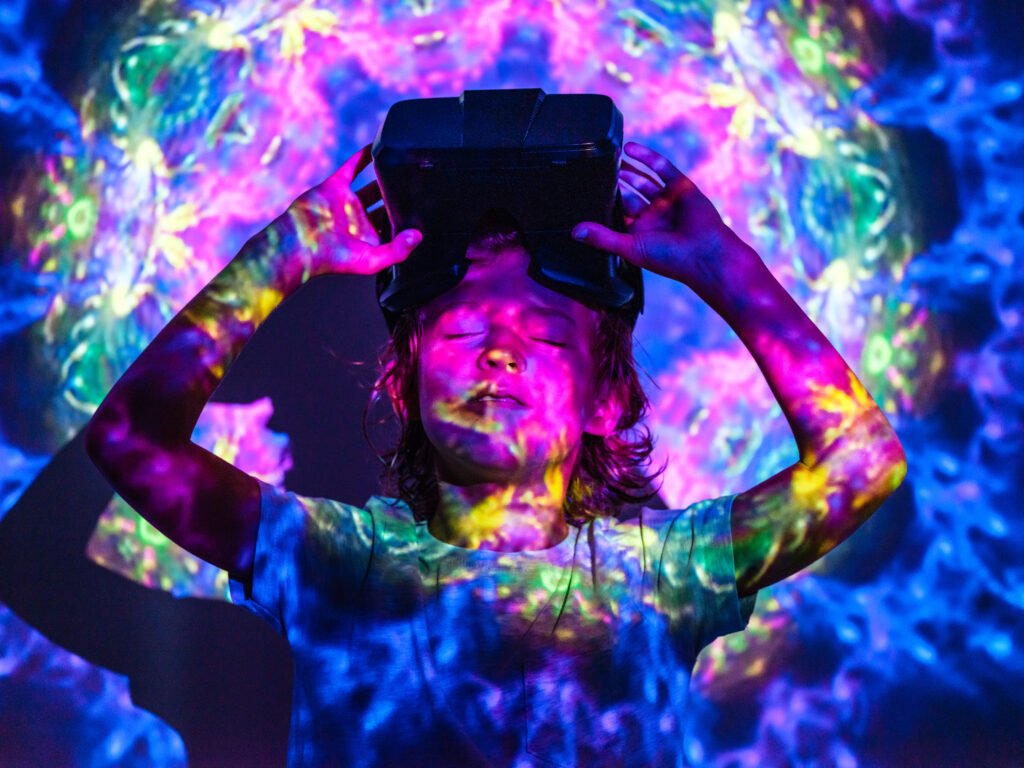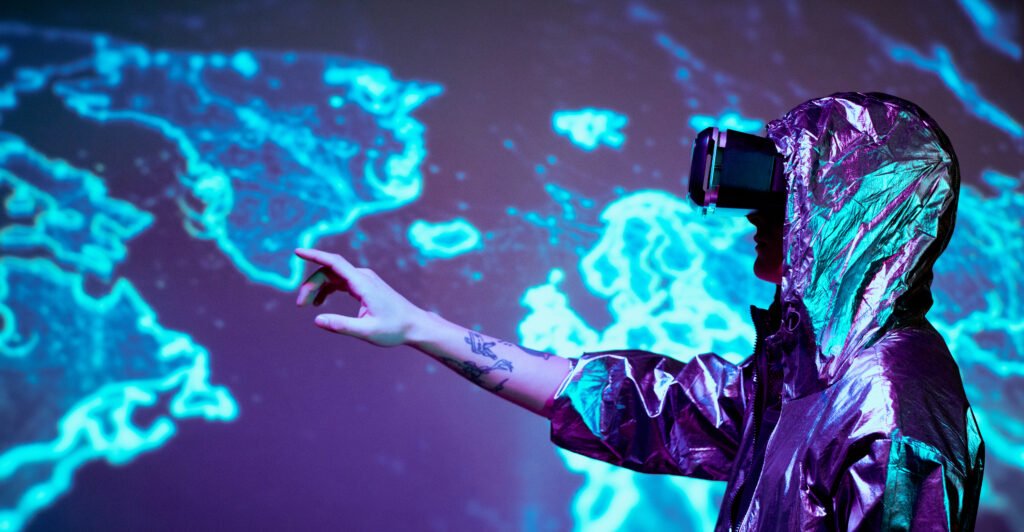Immersive art redefines how we experience the artistic world. By placing the spectator at the center of creation, it breaks barriers and creates deep sensory connections. Enhanced by digital art, this experience blends image, sound, and movement so that the work is no longer merely observed but fully lived.
This transformation is not only aesthetic but also cultural. The audience moves from being a passive observer to becoming a participant, making each work unique for every individual. It feels like stepping into a universe where reality and imagination merge.
The Evolution of Immersive Art and Its Sensory Impact
Since the 1960s, artists have explored new ways to foster interaction between the public and the work. With advances in digital technologies, immersion has gained new dimensions. Interactive installations, 360-degree projections, virtual and augmented reality create environments where visitors physically move through the artwork’s space.

Examples like Japan’s TeamLab show how nature, light, and technology can combine to create constantly changing landscapes. Visitors do not just watch but influence what happens around them. This continuous exchange turns the work into something alive and ever-evolving.
According to the book The Medium Is the Message by Marshall McLuhan, published in 1967, the way a message is delivered directly affects the experience and meaning it carries. In immersive art, the digital and interactive medium is an essential part of the narrative, making it impossible to separate form and content.
Digital Art as a Cultural Revolution
Digital art is not just a tool but a driver of cultural democratization. Museums and galleries around the world incorporate immersive experiences to attract diverse audiences, breaking geographical and cultural barriers. The Instituto Tomie Ohtake in São Paulo has hosted exhibitions that combine interactive projections and sensory installations. In the United States, ARTECHOUSE has become a reference point for merging art and technology in captivating ways.
According to the book The Return of the Real by Hal Foster, published in 1996, contemporary art does not merely represent reality but reconstructs it. Immersive art, by placing the spectator inside the work, reconstructs reality in a participatory way, allowing each person to create their own interpretation.
This transformation is also evident in institutions like Tate Modern in London, which frequently presents interactive installations that redefine the relationship between the audience and exhibition space. By combining visual, auditory, and tactile stimuli, these environments become complete experiences that leave a lasting impact on memory and emotion.
From Emotional Impact to a Shift in Perception
The power of immersive art lies in its ability to create unique experiences that remain in memory long after the initial contact. Each installation can evoke different memories for each visitor, as the interaction changes according to individual behavior.
This ability to provoke new perceptions is what makes it so powerful. By being inside the artwork, the audience is invited to reflect on their role in the world and on how the boundaries between art and life can be subtler than we imagine.
More than a trend, immersive art represents a movement that challenges conventions and points toward a future in which the public is an active part of artistic creation. By combining technology, creativity, and participation, it paves the way for new forms of expression and cultural understanding.Immersive art is not just about seeing, but about feeling, living, and transforming.
It places the individual at the heart of the creative process, breaking away from centuries of passive contemplation and making way for full participation. In an increasingly digital world, this form of art stands as one of the most powerful tools for human connection and cultural transformation, making it clear that in the art experience of the future, we will all be part of the work.



